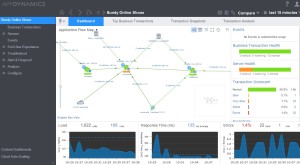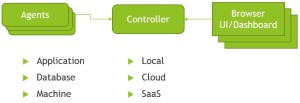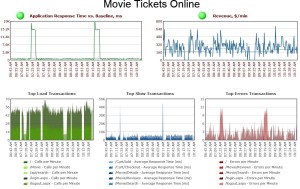Orasi has partnered with AppDynamics, a Leader in Gartner’s 2013 Magic Quadrant for Application Performance Monitoring. AppDynamics delivers simplicity, visibility, and deep diagnostics that ops and dev teams require.
The new world of distributed web applications has created a whole new set of challenges for those tasked with ensuring application health and performance. Modern application architectures, new technologies, and a rapid rate of change have created a perfect storm of complexity in today’s applications. As a result, performance problems surface that are often difficult to identify, diagnose, and fix.
As these applications become increasingly critical to the business, it’s more important than ever to have a simple yet fast way to monitor, diagnose, and resolve application problems before they affect revenue.
AppDynamics application performance management (APM) is the next generation application performance management solution that simplifies the management of complex, business-critical apps. No one can stand slow applications–not IT ops and dev teams, not the CIO, and definitely not end users. With AppDynamics APM, no one has to tolerate slow performing apps ever again. We allow companies to monitor, troubleshoot, diagnose, and scale their production applications–gaining 10x their current level of visibility and getting to root cause 90% faster!
Architecture Map
(Click images to enlarge)
How It Works
Agents
Agents are installed wherever applications, databases, or any machine information that needs to be monitored is. The agent sends its telemetry to the controller to be processed. It is smart, fast, and lightweight consuming very low resources. Agents can be of type:
- Application – for monitoring applications such as JVMS, .Net Services, or PHP.
- Database – for monitoring databases such as MySQL, SQL Server, or Sybase.
- Machine – for monitoring any machine performance information such as CPU, memory, or disk.
Controller
The controller is the collection point for all of the agent information. It can be flexibly deployed in the following configurations:
- Local – on premise on your own hardware infrastructure.
- Cloud – being hosted by services such as AWS, Azure, or Rackspace.
- SaaS –AppDynamics will host the controller for you.
- Hybrid – a combination of the above.
UI
The UI allows you to visualize your entire application in a map view and drill into performance issues to find the root cause. You can create custom dashboards that allow you to do things like correlate transactions with a dollar value. The following diagram is an example of this:
What makes AppDynamics different?
Wide & deep visibility for production
- End-to-end browser to back-end visibility
- Built for production environments: < 2% overhead
- Designed for highly-distributed/SOA architectures
- Business transaction-centric
Auto-discovers application map and transaction flows
- Short mean-time-to-resolution
- Complete code-level diagnostics when you need them
- Analytics reveal business impact in seconds
- Comprehensive coverage of common application performance issues
- Insight into database performance and SQL execution
- Automated response with application runbook automation
Intelligent
- Self-learning baselines to automate threshold configuration
- Automatic scoring of business transaction performance
- Best fit for agile environments
- dynamic code instrumentation
- Ability to analyze metrics based on percentiles: 90%, 95%, 99% to get a better understanding of the distribution of metrics.
Fast & easy
- Fast time-to-value (measured in minutes)
- Easy to use for Development and Operations
Cost effective
- A fraction of the cost of legacy APM solutions
- Simple subscription pricing model
Conclusion
I have used other APM competitors and I can honestly say that AppDynamics is the most flexible, lightweight, easy to deploy, and allows the fastest and deepest drill down to find the root cause of problems. I have watched AppDynamics being deployed at customer sites and have seen the excitement as the agents come online and build the map of their architecture. We were actually finding issues in their system after we installed the first agent!
Links
By Jon Fowler, Senior Consultant at Orasi Software


